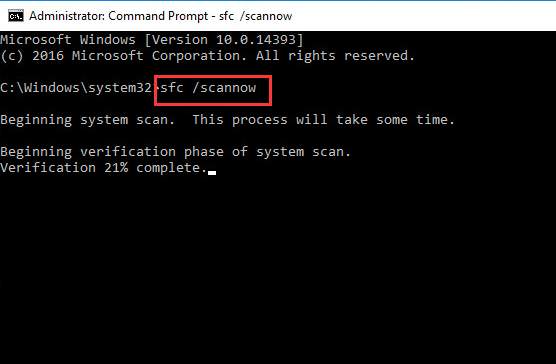-
×InformationNeed Windows 11 help?Check documents on compatibility, FAQs, upgrade information and available fixes.
Windows 11 Support Center. -
-
×InformationNeed Windows 11 help?Check documents on compatibility, FAQs, upgrade information and available fixes.
Windows 11 Support Center. -
- HP Community
- Notebooks
- Notebook Operating System and Recovery
- HP Spectre x360: Constant, Unpredictable BSOD, CRITICAL_PROC...

Create an account on the HP Community to personalize your profile and ask a question
05-14-2020 10:48 AM - edited 05-14-2020 10:50 AM
OS: Windows 10 64-bit
I've been having consistent BSOD issues with my PC intermittently for several months. I remember them beginning after a Windows 10 and BIOS update near the beginning of 2020, but have not had a chance or time to address them. I've been working around the crashes, but have gotten sufficiently frustrated and decided enough is enough...
BSOD can happen while I'm actively using the computer or it is sitting idle. The frequency of crashes will vary with updates to Windows OS or other drivers, but still persist. The BSOD is not related to the use of any particular software. The BSOD error states: CRITICAL_PROCESS_DIED every time. Over the last couple of weeks, the computer has failed to create a dump file after each crash and does not restart itself. All my drivers are up to date, and I have the most current version of Windows 10 . The errors in the Windows Reliability History seem to indicate an issue with the Intel Graphics Card(??), and read this way:
Description
Faulting Application Path: C:\Windows\System32\cAVS\Intel(R) Audio Service\IntelAudioService.exe
Problem signature
Problem Event Name: APPCRASH
Application Name: IntelAudioService.exe
Application Version: 1.0.152.0
Application Timestamp: 5bd0d480
Fault Module Name: StackHash_192a
Fault Module Version: 0.0.0.0
Fault Module Timestamp: 00000000
Exception Code: c0000005
Exception Offset: PCH_3A_FROM_ntdll+0x000000000009CBC4
OS Version: 10.0.18363.2.0.0.768.101
Locale ID: 1033
Additional Information 1: 192a
Additional Information 2: 192abb26d851652d921f4501d2996525
Additional Information 3: c12e
Additional Information 4: c12e3f2e568c10232196f891c2b44825
Extra information about the problem
Bucket ID: 9ff6251132a5717afcff06ed49dcdb37 (2089396368339426103)
I tried updating the Intel UHD Graphics driver to a more current version (against the advice of HP and Intel). The crashes continued with the same error with the newer Intel Driver, so I reverted back to HP's most recent version.
Any insights or suggestions on a fix before I give in and reset the PC would be appreciated.
Thanks!
05-24-2020 11:41 AM
@woody1122 Welcome to HP Community!
In most cases, buggy drivers could cause Critical Process Died blue screen of death error. You can try updating all the device drivers to the latest versions to fix it.
There are two ways you can get the right drivers for your video card and monitor: manually or automatically.
Manual driver update – You can update your device drivers manually by going to the manufacturer’s website for both all your devices, and searching for the most recent correct driver for each. Be sure to choose only drivers that are compatible with your variant of Windows 10.
Another big cause of Critical Process Died is faulty or buggy hardware or software programs installed. If you’ve recently installed some programs or hardware components, try upgrade them to the latest versions available or remove them completely from your PC.
If your hard drive or RAM is corrupted, a blue screen of death error such as Critical Process Died would pop up and force reboot your computer. This is your computer’s way of protecting itself from further damage. You can run two built-in checks to make sure that your disk and RAM are at a good state:
1: Run SFC (System File Checker)
SFC stands for system file checker. It helps you replace corrupted or faulty system files with new good ones.
1) On your keyboard, press the Windows logo key, and type in cmd. Right-click Command Prompt and click Run as administrator.

2) Type sfc /scannow and press Enter on your keyboard.

Wait for a while for this process to finish. Then restart your computer.
3) Restart your computer when the check is done. See if the Critical Process Died error happens again. If the problem continues, move on to the DISM check.
DISM stands for Deployment Image Servicing and Management. If the system file checker can’t help you fix the Critical Process Died blue screen of death error, you can run DISM as well. Otherwise, it wouldn’t be necessary.
1) On your keyboard, press the Windows logo key, and type cmd. Right-click Command Prompt and click Run as administrator.

2) In the Command Prompt window, type in the following commands one by one, and press Enter key after each one.
Dism /Online /Cleanup-Image /CheckHealth
Dism /Online /Cleanup-Image /ScanHealth
Dism /Online /Cleanup-Image /RestoreHealth

3) Restart your computer when all the checking are done.
If you’ve tried all the above methods but still can’t solve your Critical Process Died problem, it’s time to refresh or reset your Windows 10: click here for steps.
Keep us posted,
If you would like to thank us for our efforts to help you,
Give us a virtual high-five by clicking the 'Thumbs Up' icon below, followed by clicking on the "Accept as solution" on this post,
Have a great day!
